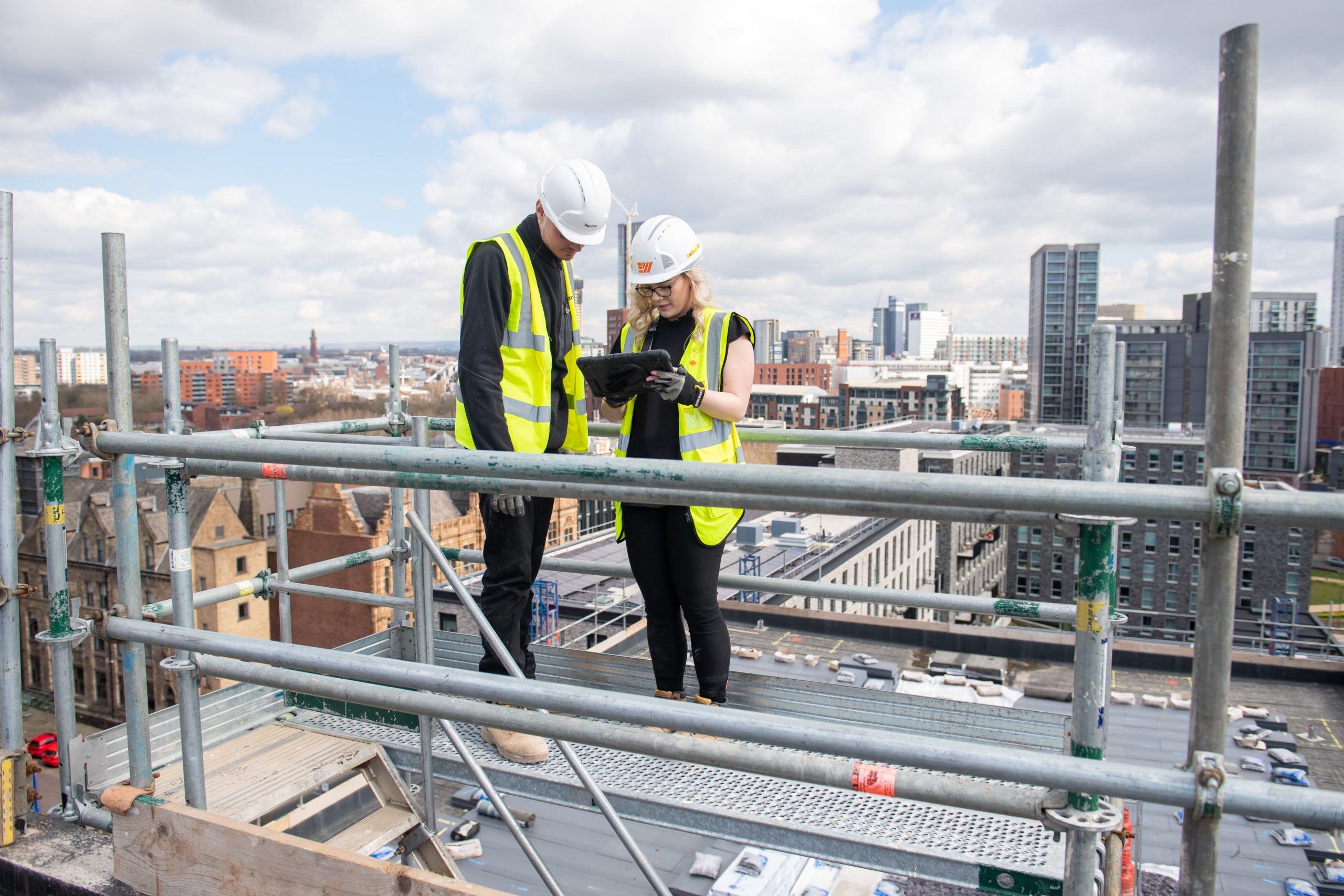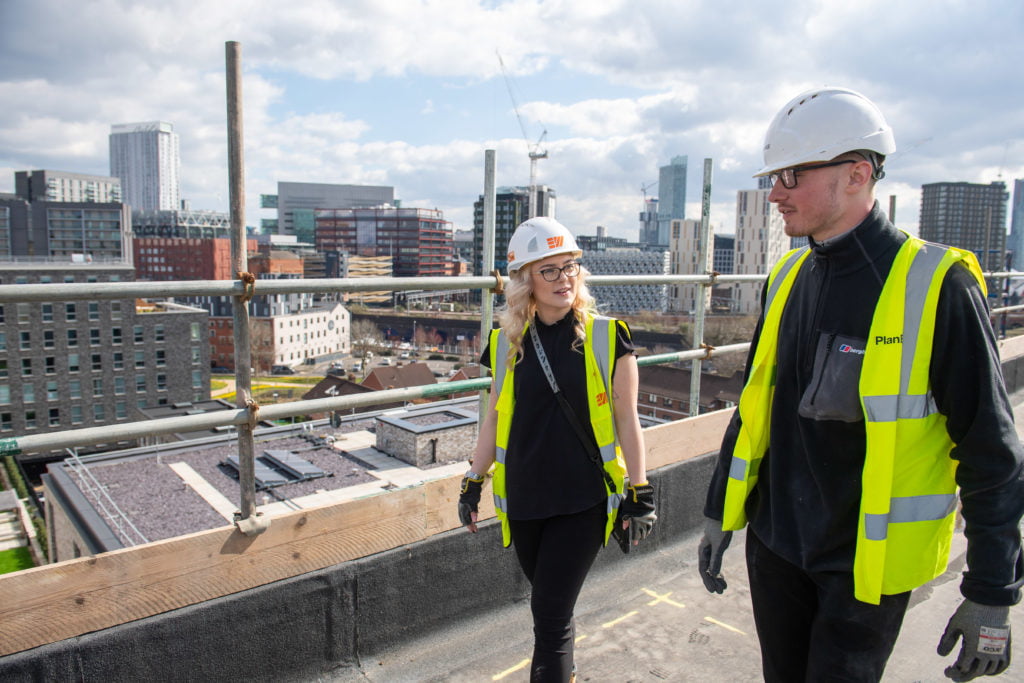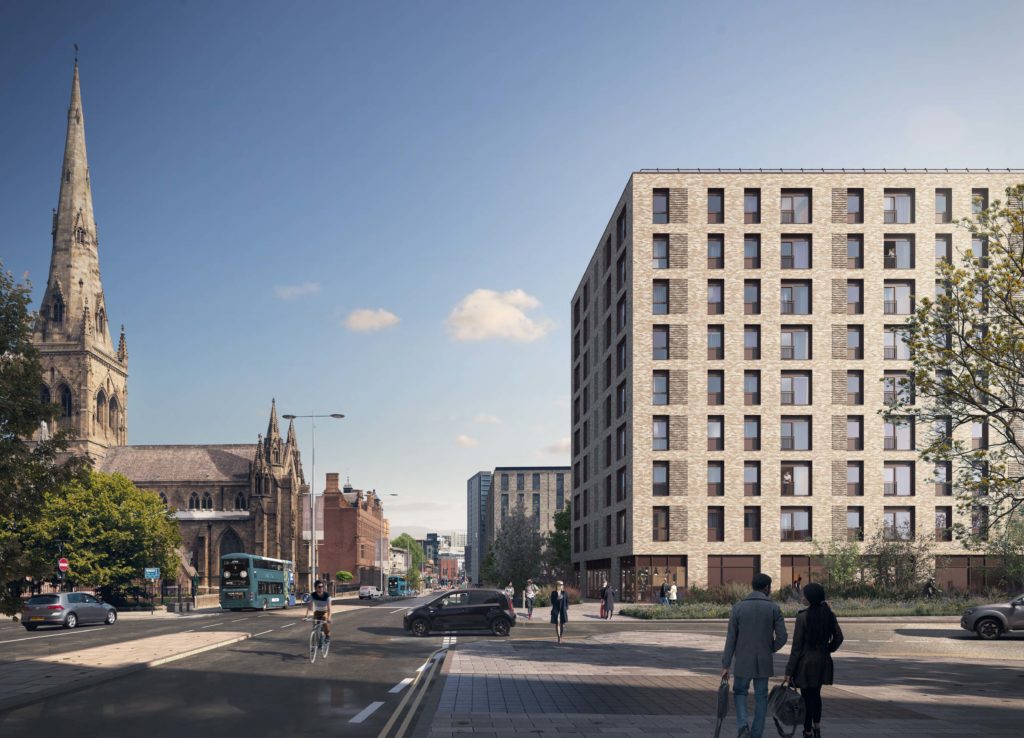Greenhaus: how we deliver Passivhaus on site
06.06.23 5 min read

We spoke to Jessica Sharples, Construction Manager for Eric Wright Construction, the contractor delivering Greenhaus, ECF’s collection of affordable, Passivhaus-certified homes in Salford.
How are your team achieving Passivhaus on site?
We use a Project Work Plan which dovetails with the Max Fordham Passivhaus Specification.
It’s been put together to manage the workmanship of operatives and management on site and is prescriptive of the set criteria and standards that we require to achieve Passivhaus-certification. It also informs management, sub-contracts and third parties of the Passivhaus Project Work Plan and associated requirements.
It includes:
Quality audit, control methods and documentation
Regular site reporting
Mock ups and testing
Evaluation process for selection of sub-contractors
Coordination of subcontractors work on site and sequencing
Trades training methods

Why is Passivhaus important?
Since agreeing the final contract with ECF, the Passivhaus element of the project has been the backbone of the scheme. The certification has been at the forefront of the team’s mind and outlook on the project. Eric Wright Construction want to achieve completion to the best quality with the best products.
Have you come across any challenges and how have you overcome them?
Challenges are inevitable, but we’ve worked together to tackle them head on.
We’ve ensured the early involvement of supply chains during the design phase to understand buildability of different design details.
Design and Build Contract – the design phase has had a bigger overlap than the usual, due to additional third parties reviewing design packages.

Artist impression of Greenhaus complete
What does it mean for you working on one of the first multi-storey Passivhaus-certified projects in the UK?
Greenhaus is ground-breaking and a real honour to be part of. The team at EWC and ECF understand the constraints we’re working with and it’s a challenge, but we’re all learning together. Every day is a learning day and with our high expertise and teamwork, we’re confident we will achieve what’s required.
What do you enjoy about working on this project?
I love learning about new aspects we don’t usually encounter. It’s really interesting working with third parties, such as Salford University modules focussing on our project and Passivhaus Site Inspections each day. We’re constantly meeting new people from different walks of life who always have positive contributions to different phases of works.
Do you think more education is required for contractors working in this sector for future projects?
Currently we complete training within inductions and interval Tool Box Talks throughout the project. All supervisors and managers have completed the official Passivhaus training and have relayed this to their onsite team. We have raised awareness of the Passivhaus requirements and each individual person is responsible for their own aspect of works.
But yes, I do think it would be beneficial to share learnings from project to project. Passivhaus schemes are relatively new and there are a lot of potential opportunities to share best practice going forward.